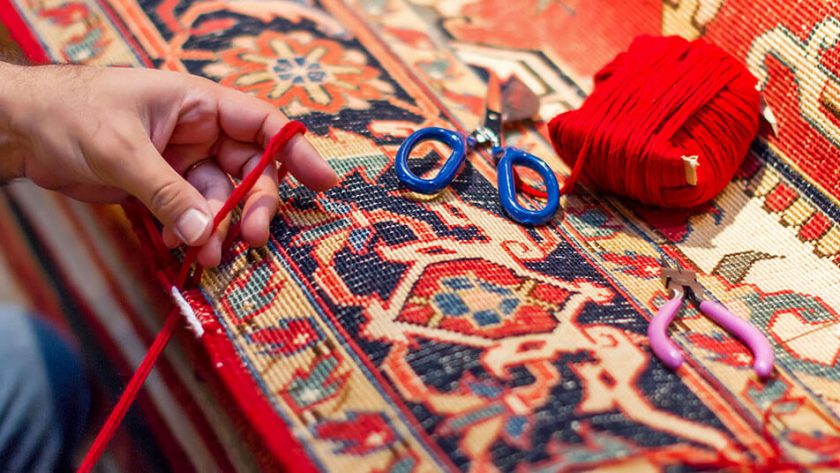A hand-knotted oriental rug typically uses natural fibers. A Handmade carpet resilience and durability depend on it. For instance, sheep’s wool typically constitutes the pile, or upper portion, of the carpet. The natural fat content of wool makes it resistant to dirt, moisture, and wear.
Sheep’s wool
The most common material for hand-knotted rugs is wool from sheep. The rug may also be locally sourced from sheep herds, depending on its origin. Wool is frequently used to make the warp and weft, in addition to the pile. Wool is still frequently spun by hand even today. Cork wool is a type of very high-quality wool that comes from the sheep’s neck. It feels particularly soft and has a higher fat content.
Silk
Silk is used to enhance the pile’s details on fine rugs, particularly Persian ones. It gives the carpet special highlights and shines in the light. Silk is utilized not only for the warp and weft but also for the entire pile in extremely high-quality rugs. However, rooms with a lot of foot traffic should avoid silk rugs. Wise prevailed after the silkworm caterpillars intricately drew the threads.
Wool and silk rugs in comparison
The distinction between rugs made of wool and silk can typically be observed immediately, even by the untrained eye. Although it is possible to discern a discernible change in the brightness of the silk carpet from various perspectives, it is frequently challenging to capture the natural shine of silk in photographs. The shift in perspective makes it easier to perceive colors and brightness because silk reflects more light than wool does.
Cotton
Carpet warp and weft are typically made of cotton. The flat weave of kilim rugs typically consists of cotton. It is the least expensive and is grown in fields.
Carpet washing
After the carpet is soaked in water, it is squeezed out to get rid of the dirt and any excess dye. The carpet is washed multiple times in this manner until all of the dust, detergent, dirt, and yarn specks are removed. After that, the carpet is laid flat on the ground and the hose is used to force water onto the carpet to clean it with fresh water. After that, the rug washers force the water through the rug pile with a wood plank that has had one edge sharpened. Impurities accumulated during the production process are eliminated by this. The colors will remain stable as the rug is exposed to the sun until it is completely dry. The carpet acquires its stunning hue as the colors gradually fade.
Construction
The backing fabric and the pile, which is bound under and between the wefts, make up the fundamental structure of traditional carpets. On Ax minster looms, the pile is formed by inserting weft across the warp chain yarns with reciprocating needles. Top and bottom wefts are typically separated by a central stuffer warp. The pile that isn’t used for the surface design effect is hidden between the top and bottom weft in Brussels and Jacquard Wilton carpets; for a surface effect, the Ax minster carpet uses yarn with no pile. By looping the yarn over wires that mechanically project it across the width of the loom and beneath the decorative pile yarns, the Wilton pile is created. The pile is either cut, resulting in Wilton carpet, or left uncut, resulting in Brussels carpet.



